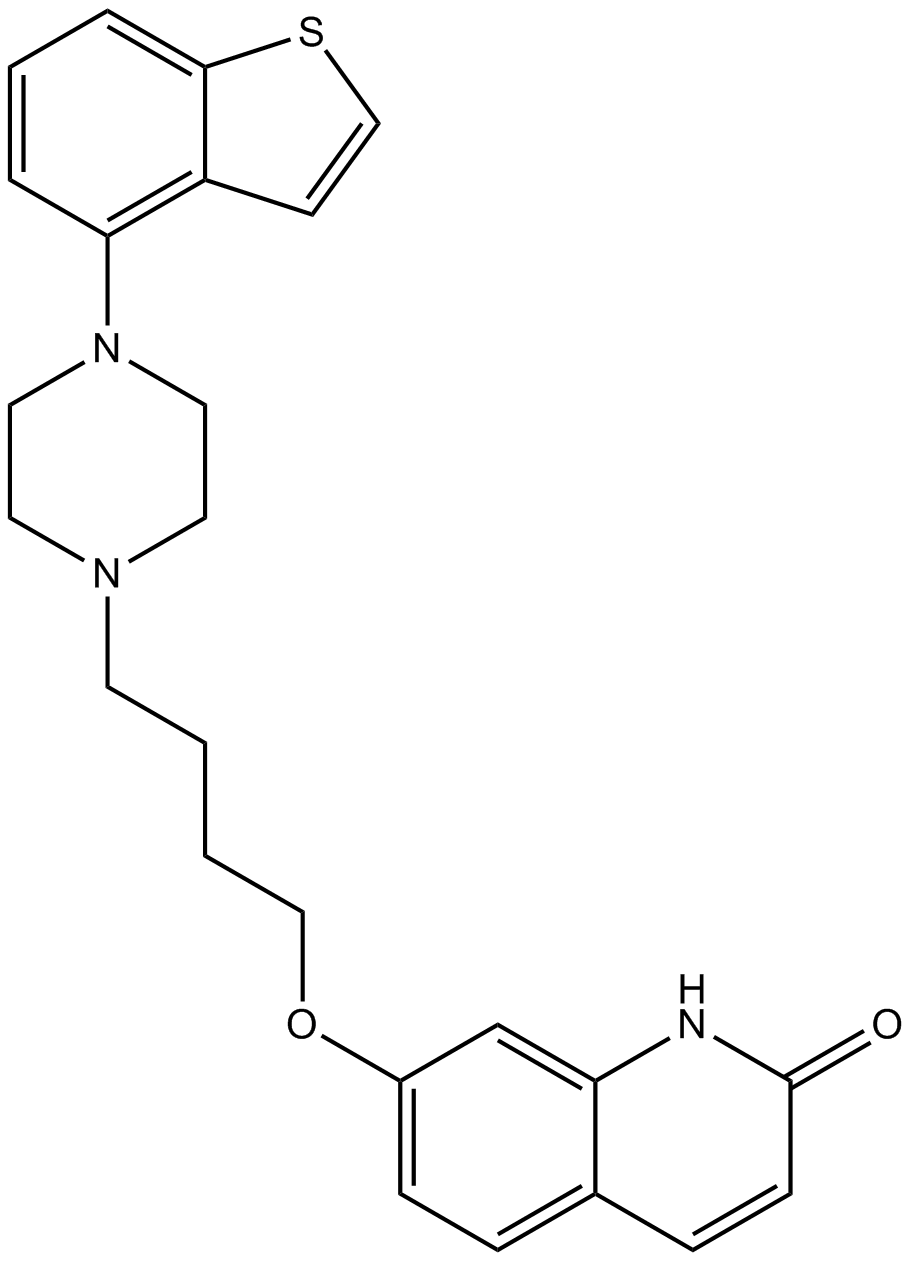Brexpiprazole (Synonyms: OPC 34712) |
| رقم الكتالوجGC11186 |
Brexpiprazole (OPC-34712) ، دواء مضاد للذهان غير نمطي نشط عن طريق الفم ، هو ناهض جزئي لمستقبلات الإنسان 5-HT1A والدوبامين D2L مع Kis من 0.12 نانومتر و 0.3 نانومتر ، على التوالي
Products are for research use only. Not for human use. We do not sell to patients.

Cas No.: 913611-97-9
Sample solution is provided at 25 µL, 10mM.
Brexpiprazole is a potent antagonist effects on 5-HT2A, α1B-, and α2C-adrenergic receptors and a partial agonist at serotonin 1A (5-HT1A) and D2 receptors. [1]
5-HT1A receptor is a G protein-coupled receptor that can mediates inhibitory neurotransmission by binding the endogenous neurotransmitter serotonin5-HT. And D2 receptor is a G protein-coupled receptor inhibits adenylyl cyclase activity.
In cloned receptor systems, brexpiprazole displayed partial agonist at h5-HT1A and hD2 receptors, and potent antagonism of h5-HT2A receptors and hα1B/2C-adrenoceptors. [2] When tested in PC12 cells, brexpiprazole increased the number of cells with neurites in a concentration-dependent manner through 5-HT1A receptors and 5-HT2A receptors.[3]
In the dizocilpine-induced social recognition deficits mice model, brexpiprazole (0.01, 0.03, 0.1mg/kg,p.o.) significantly ameliorated the recognition deficits, and had no effect on social recognition in untreated control mice. Brexpiprazole may confer a beneficial effect on social cognition deficits in patients with psychiatric disorders. [1]
References:
[1]. Noriko Yoshimi, Takashi Futamura, Kenji Hashimoto. Improvement of dizocilpine-induced social recognition deficits in mice by brexpiprazole, a novel serotonin-dopamine activity modulator. European Neuropsychopharmacology, http://dx.doi.org/10.1016/j.euroneuro.2014.12.014
[2]. Maeda K, Sugino H, Akazawa H et al. Brexpiprazole I: in vitro and in vivo characterization of a novel serotonin-dopamine activity modulator. journal of pharmacology and experimental therapeutics, 2014 Sep;350(3):589-604.
[3]. Tamaki Ishima, Takashi Futamura, Yuta Ohgi et al. Potentiation of neurite outgrowth by brexpiprazole, a novel serotonin–dopamine activity modulator: A role for serotonin 5-HT1A and 5-HT2A receptors. European Neuropsychopharmacology, http://dx.doi.org/10.1016/j.euroneuro.2015.01.014
Average Rating: 5 (Based on Reviews and 5 reference(s) in Google Scholar.)
GLPBIO products are for RESEARCH USE ONLY. Please make sure your review or question is research based.
Required fields are marked with *




















